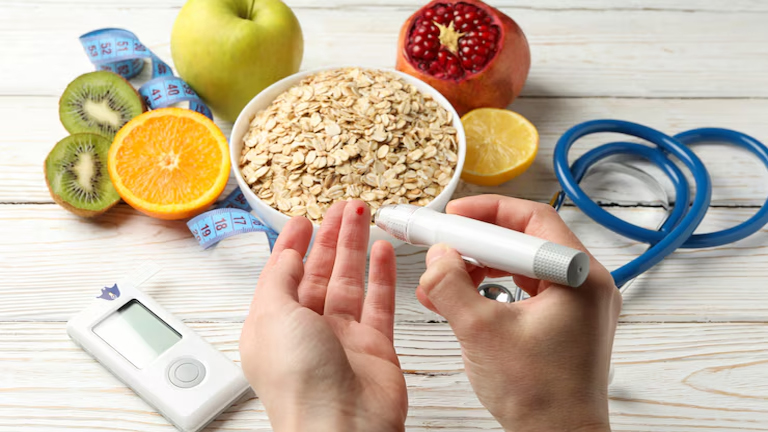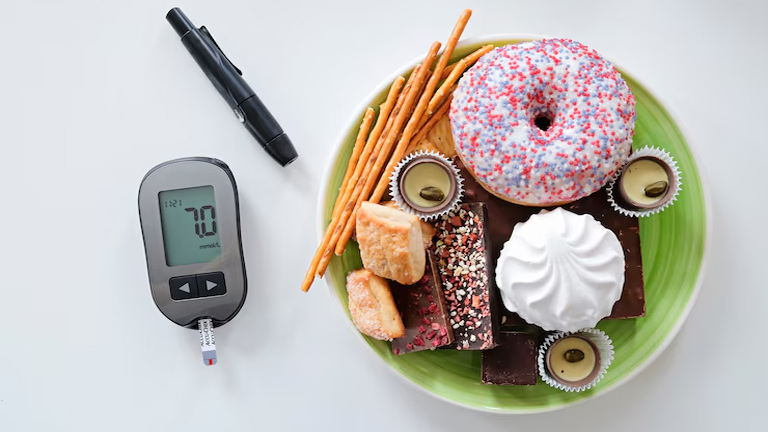Type 2 diabetes is a chronic metabolic disorder characterized by high blood sugar levels due to insulin resistance or insufficient insulin production. Unlike type 1 diabetes, which is an autoimmune condition, type 2 diabetes is largely influenced by lifestyle factors, genetics, and obesity. This condition affects millions worldwide and can lead to severe complications if left unmanaged.
In this comprehensive guide, we’ll explore the causes, symptoms, risk factors, and treatment options for type 2 diabetes. We’ll also discuss effective prevention strategies to help you maintain healthy blood sugar levels.
What Is Type 2 Diabetes?
Type 2 diabetes, also known as diabetes mellitus type 2, occurs when the body becomes resistant to insulin or fails to produce enough insulin to regulate blood glucose effectively. Insulin is a hormone that helps cells absorb glucose for energy. When this process is disrupted, glucose accumulates in the bloodstream, leading to hyperglycemia (high blood sugar).
Key Differences Between Type 1 and Type 2 Diabetes
-
Type 1 Diabetes: An autoimmune condition where the pancreas produces little to no insulin.
-
Type 2 Diabetes: The body either resists insulin or doesn’t produce enough, often linked to obesity and lifestyle factors.
Symptoms of Type 2 Diabetes
Many people with type 2 diabetes experience mild or no symptoms initially, making early detection challenging. Common symptoms include:
-
Frequent urination (polyuria) – Excess glucose in the blood forces the kidneys to work harder, leading to increased urination.
-
Increased thirst (polydipsia) – Dehydration from frequent urination triggers excessive thirst.
-
Fatigue – Cells deprived of glucose energy can lead to constant tiredness.
-
Blurred vision – High blood sugar levels can cause swelling in the eye lenses.
-
Slow wound healing – Poor circulation and nerve damage (diabetic neuropathy) impair healing.
-
Tingling or numbness in hands/feet – A sign of nerve damage due to prolonged high blood sugar.
-
Unexplained weight loss – The body may start burning fat and muscle for energy when glucose isn’t utilized properly.
If left untreated, type 2 diabetes can lead to severe complications like heart disease, kidney disease (diabetic nephropathy), and vision problems.
Causes and Risk Factors of Type 2 Diabetes
Several factors contribute to the development of type 2 diabetes:
1. Insulin Resistance
When muscle, fat, and liver cells don’t respond well to insulin, glucose remains in the bloodstream instead of being absorbed.
2. Obesity and Diabetes
Excess body fat, particularly around the abdomen, increases insulin resistance.
3. Genetics and Family History
A family history of diabetes raises the risk, indicating a genetic predisposition.
4. Sedentary Lifestyle
Lack of physical activity contributes to weight gain and poor glucose metabolism.
5. Poor Diet
High sugar intake, processed foods, and refined carbs spike blood sugar levels.
6. Other Medical Conditions
-
Gestational diabetes (diabetes during pregnancy) increases future risk.
-
Polycystic ovary syndrome (PCOS) is linked to insulin resistance.
-
High blood pressure and cholesterol levels worsen diabetes risk.
Diagnosis of Type 2 Diabetes
Doctors use several tests to diagnose type 2 diabetes:
-
Fasting Blood Sugar Test: Measures glucose levels after an overnight fast.
-
Normal: Below 100 mg/dL
-
Prediabetes: 100–125 mg/dL
-
Diabetes: 126 mg/dL or higher
-
-
HbA1c Test (Glycated Hemoglobin): Provides an average blood sugar level over 2–3 months.
-
Normal: Below 5.7%
-
Prediabetes: 5.7%–6.4%
-
Diabetes: 6.5% or higher
-
-
Oral Glucose Tolerance Test (OGTT): Checks blood sugar before and after consuming a sugary drink.
Early detection of prediabetes can help prevent progression to full-blown diabetes.
Treatment and Management of Type 2 Diabetes
While there’s no cure for type_2 diabetes, it can be effectively managed through lifestyle changes, medications, and regular monitoring.
1. Medications for Diabetes
-
Metformin – The first-line treatment that reduces liver glucose production and improves insulin sensitivity.
-
Ozempic (Semaglutide) – A GLP-1 receptor agonist that helps lower blood sugar and promotes weight loss.
-
Insulin Therapy – Required in advanced cases where oral medications aren’t sufficient.
-
SGLT2 Inhibitors & DPP-4 Inhibitors – Help kidneys remove excess glucose or stimulate insulin release.
2. Dietary Changes
A diabetic diet focuses on:
-
Low-carb diets – Reducing refined sugars and processed foods.
-
High fiber intake – Whole grains, vegetables, and legumes stabilize blood sugar.
-
Healthy fats & lean proteins – Avocados, nuts, fish, and chicken help maintain energy levels.
3. Exercise and Weight Loss
Regular physical activity improves insulin sensitivity. Aim for:
-
150 minutes of moderate exercise per week (walking, cycling, swimming).
-
Strength training to build muscle, which helps metabolize glucose better.
4. Blood Sugar Monitoring
Regularly checking blood glucose levels helps adjust diet, exercise, and medications.
Preventing Type 2 Diabetes
Even with risk factors, type_2 diabetes can often be prevented through:
-
Maintaining a healthy weight – Losing 5–10% of body weight can significantly reduce risk.
-
Eating a balanced diet – Focus on whole foods, fiber, and low-glycemic-index foods.
-
Staying active – Exercise improves insulin function and lowers blood sugar.
-
Regular health check-ups – Early detection of prediabetes allows for timely intervention.
Type 2 Diabetes: Overview, Symptoms, Risk Factors, and Management
| Category | Details |
|---|---|
| What is Type_2 Diabetes? | A chronic condition where the body becomes resistant to insulin or doesn’t produce enough, leading to high blood sugar (hyperglycemia). |
| Main Cause | Insulin resistance, often linked to obesity, genetics, and sedentary lifestyle. |
| LSI Keywords | Diabetes mellitus type 2, glucose intolerance, HbA1c, prediabetes. |
| Common Symptoms | Associated Complications |
|---|---|
| Frequent urination | Diabetic neuropathy (nerve damage) |
| Increased thirst | Heart disease |
| Fatigue | Kidney disease (diabetic nephropathy) |
| Blurred vision | Slow wound healing |
| Unexplained weight loss | High blood pressure |
| Risk Factors | Prevention Strategies |
|---|---|
| Obesity | Low-carb diet, reduced sugar intake |
| Family history of diabetes | Regular exercise (150 mins/week) |
| Sedentary lifestyle | Weight loss (5–10% of body weight) |
| Gestational diabetes | Blood sugar monitoring |
| PCOS | Quit smoking, limit alcohol |
| Diagnostic Tests | Normal Range | Prediabetes | Diabetes |
|---|---|---|---|
| Fasting Blood Sugar | <100 mg/dL | 100–125 mg/dL | ≥126 mg/dL |
| HbA1c | <5.7% | 5.7%–6.4% | ≥6.5% |
| Oral Glucose Tolerance Test | <140 mg/dL (2-hr) | 140–199 mg/dL | ≥200 mg/dL |
| Treatment Options | Examples |
|---|---|
| Medications | Metformin, Ozempic (semaglutide), insulin therapy |
| Diet | Diabetic diet (high fiber, lean protein, healthy fats) |
| Lifestyle Changes | Exercise, stress management, smoking cessation |
| Monitoring | Regular HbA1c tests, blood glucose checks |
Conclusion
Type_2 diabetes is a serious but manageable condition. By understanding its causes, symptoms, and risk factors, individuals can take proactive steps to prevent or control the disease. Lifestyle changes, proper medication, and regular monitoring are key to maintaining healthy blood sugar levels and avoiding complications.
If you suspect you have diabetes or are at risk, consult a healthcare provider for testing and personalized advice. Early intervention can make a significant difference in long-term health outcomes.
FAQs About Type 2 Diabetes
Q: Can type_2 diabetes be reversed?
A: While it can’t be fully cured, weight loss, diet changes, and exercise can put diabetes into remission.
Q: What foods should diabetics avoid?
A: Sugary drinks, white bread, fried foods, and high-sugar snacks should be limited.
Q: How often should I check my blood sugar?
A: It depends on your treatment plan, but many people check daily or as advised by their doctor.


